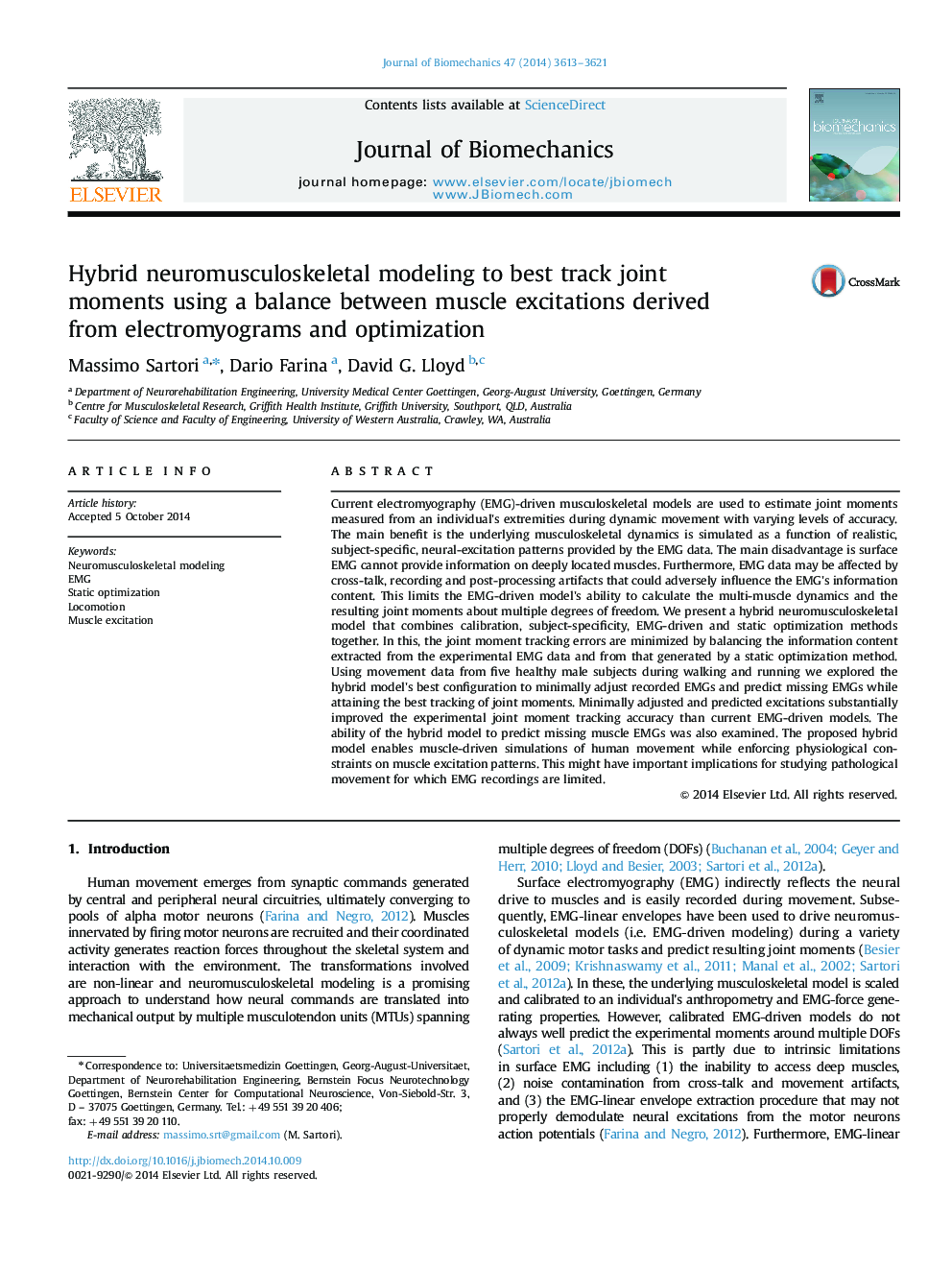| کد مقاله | کد نشریه | سال انتشار | مقاله انگلیسی | نسخه تمام متن |
|---|---|---|---|---|
| 872024 | 910224 | 2014 | 9 صفحه PDF | دانلود رایگان |
Current electromyography (EMG)-driven musculoskeletal models are used to estimate joint moments measured from an individual׳s extremities during dynamic movement with varying levels of accuracy. The main benefit is the underlying musculoskeletal dynamics is simulated as a function of realistic, subject-specific, neural-excitation patterns provided by the EMG data. The main disadvantage is surface EMG cannot provide information on deeply located muscles. Furthermore, EMG data may be affected by cross-talk, recording and post-processing artifacts that could adversely influence the EMG׳s information content. This limits the EMG-driven model׳s ability to calculate the multi-muscle dynamics and the resulting joint moments about multiple degrees of freedom. We present a hybrid neuromusculoskeletal model that combines calibration, subject-specificity, EMG-driven and static optimization methods together. In this, the joint moment tracking errors are minimized by balancing the information content extracted from the experimental EMG data and from that generated by a static optimization method. Using movement data from five healthy male subjects during walking and running we explored the hybrid model׳s best configuration to minimally adjust recorded EMGs and predict missing EMGs while attaining the best tracking of joint moments. Minimally adjusted and predicted excitations substantially improved the experimental joint moment tracking accuracy than current EMG-driven models. The ability of the hybrid model to predict missing muscle EMGs was also examined. The proposed hybrid model enables muscle-driven simulations of human movement while enforcing physiological constraints on muscle excitation patterns. This might have important implications for studying pathological movement for which EMG recordings are limited.
Journal: Journal of Biomechanics - Volume 47, Issue 15, 28 November 2014, Pages 3613–3621
